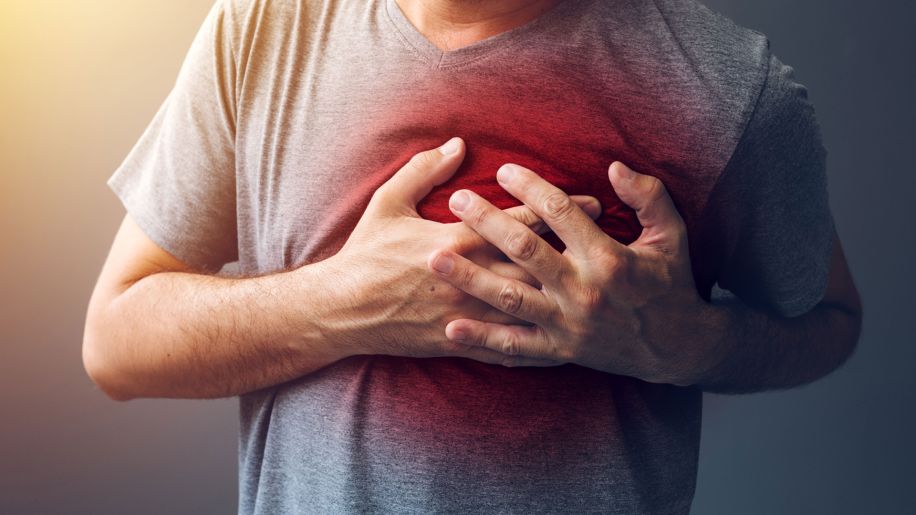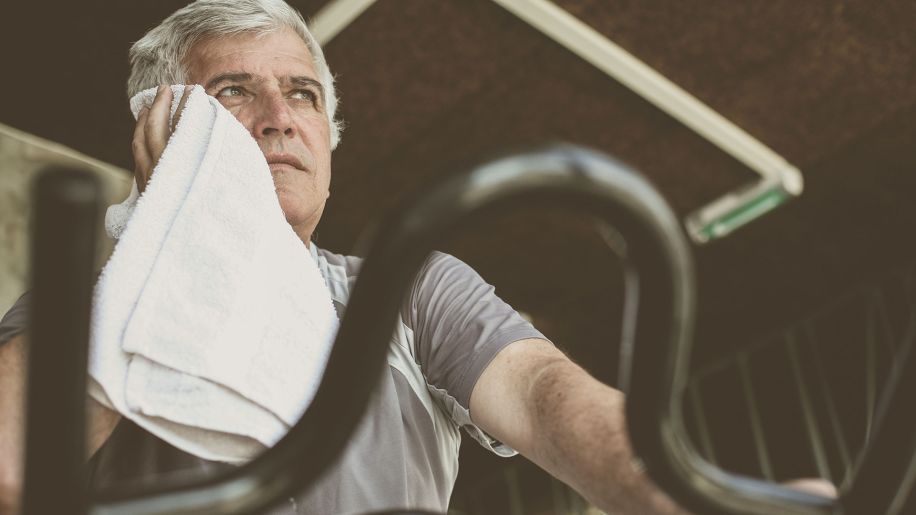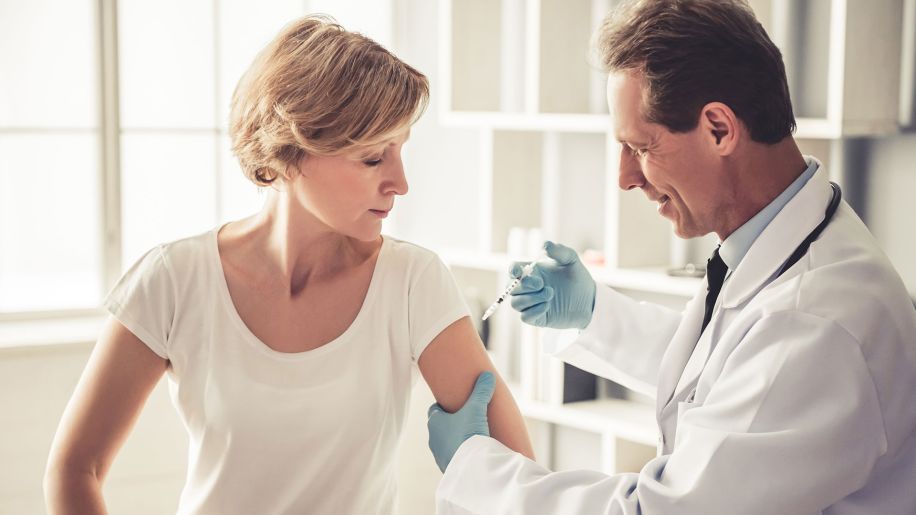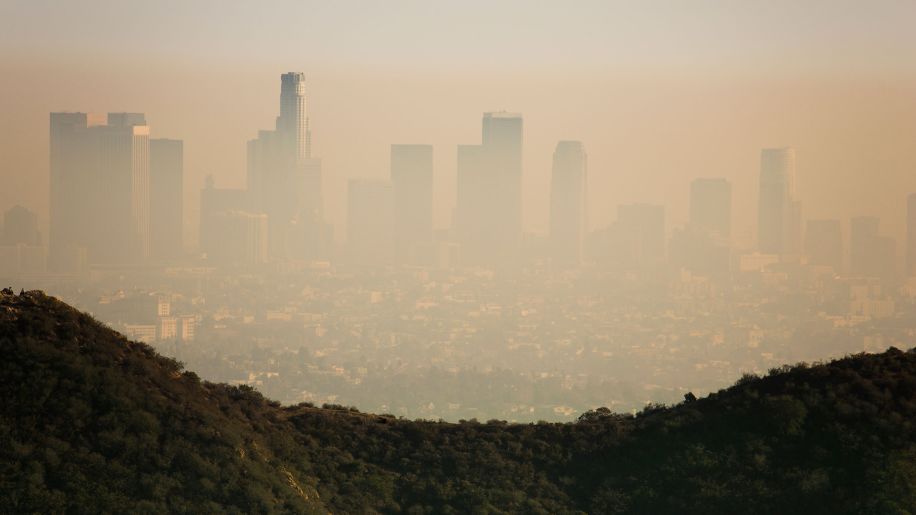6 expert tips for living well with COPD
Being proactive goes a long way towards staying healthy and active.
Updated on November 20, 2024

Chronic obstructive pulmonary disease (COPD), a lung disease that makes it hard to breathe, often requires lifestyle changes. But if you’re living with this progressive condition, you’re not alone. About 16 million adults in the United States are already diagnosed with COPD, and many more may have undiagnosed COPD, according to the Centers for Disease Control and… Show More
Chronic obstructive pulmonary disease (COPD), a lung disease that makes it hard to breathe, often requires lifestyle changes. But if you’re living with this progressive condition, you’re not alone. About 16 million adults in the United States are already diagnosed with COPD, and many more may have undiagnosed COPD, according to the Centers for Disease Control and Prevention (CDC).
Smoking is the number one risk factor for COPD, explains Nereida A. Parada, MD, a pulmonologist and medical director for the Grace Anne Dorney Pulmonary and Cardiac Rehabilitation Center at Tulane Medical Center in New Orleans, Louisiana. A large 2023 study published in the journal Frontiers in Medicine found that former smokers have a nearly 21 percent higher risk of developing COPD, while current smokers have a 46 percent higher risk.
While having COPD or other lung disease can limit your activities, Dr. Parada says there are several steps people with lung disease can take to control their symptoms and improve their quality of life.
Show Less
Make sure it’s not more than COPD
Having other conditions in addition to COPD may limit your ability to exercise and tolerate physical activity, Parada cautions. “People with advanced COPD also may have heart problems, and people who have heart problems may also have COPD, especially if they used to smoke or are still smoking," she… Show More
Having other conditions in addition to COPD may limit your ability to exercise and tolerate physical activity, Parada cautions. “People with advanced COPD also may have heart problems, and people who have heart problems may also have COPD, especially if they used to smoke or are still smoking," she says. "It may not just be COPD.” Make sure that a qualified healthcare provider (HCP) properly evaluates you for other conditions like heart failure, coronary artery disease, and atrial fibrillation.
Show Less
Stick with your rehab program
Participating in a pulmonary rehabilitation (rehab) program is one of the most important things people with COPD or asthma can do to help manage their condition. “I believe mind-body medicine, which is really what pulmonary rehab is all about, is very important for people with COPD to… Show More
Participating in a pulmonary rehabilitation (rehab) program is one of the most important things people with COPD or asthma can do to help manage their condition. “I believe mind-body medicine, which is really what pulmonary rehab is all about, is very important for people with COPD to know about,” Parada says. “Nutrition, exercise, relaxation, and how we can attain that—all of these principles are central to pulmonary rehab.” Unfortunately, she notes, too many people do not practice what they learned once their formal program is complete. “Continuous engagement with exercise and self-care is very important,” she adds.
Show Less
Exercise
Exercise is a major component of pulmonary rehab. People with advanced disease may have difficulty with daily activities, such as brushing their teeth or combing their hair, so cardiovascular exercises, such as walking, are very important, Parada explains. Exercise will help enable you to… Show More
Exercise is a major component of pulmonary rehab. People with advanced disease may have difficulty with daily activities, such as brushing their teeth or combing their hair, so cardiovascular exercises, such as walking, are very important, Parada explains. Exercise will help enable you to perform daily activities without being extremely short of breath, according to Parada.
“Once you start exercising, it gets easier and the benefits last a long time," she says. "Pulmonary rehab really engages the entire body. It builds endurance and is very important to improve your whole life.” Speak with your HCP about how to continue exercise after your pulmonary rehab program ends.
Show Less
Try to avoid harmful germs
No one wants to get sick, especially if you already have a condition that compromises your lung function.
- Stay up to date with the latest COVID-19 vaccine. Everyone over six months of age can receive the latest version of the COVID vaccine. There are two mRNA vaccines available, made by Moderna … Show More
No one wants to get sick, especially if you already have a condition that compromises your lung function.
- Stay up to date with the latest COVID-19 vaccine. Everyone over six months of age can receive the latest version of the COVID vaccine. There are two mRNA vaccines available, made by Moderna and Pfizer-BioNTech, as well as a third protein subunit vaccine made by Novavax.
- Get a flu shot. “Flu shots are a must,” Parada says. Early- to mid-fall is the time to get your flu shot.
- Get the pneumonia vaccinations. Adults with COPD between the ages of 19 and 64 should receive a vaccination. When they turn 65, they should be vaccinated up to two more times, depending on their individual health situation.
- Get vaccinated against RSV. Adults who are 60 or older with COPD should get the vaccine for respiratory syncytial virus (RSV), as well as all adults age 75 or older.
- Don’t touch your eyes or nose. “It seems so simple, but it’s such a difficult habit to break,” Parada says. "If something is bothering your eyes or nose, the first thing you do is bring your hands to your face. It doesn’t matter how many times you wash your hands. You bring viruses into your mucus membranes via your hands.” Use the back of your hands to alleviate an itch or over-secretion (such as a runny nose) and don’t reuse tissues, Parada advises. And, yes, wash your hands well and often.
- Limit contact with others who are or may be sick. If you’re traveling or will be in close contact with a large group in a poorly ventilated area, consider wearing a protective mask, or change seats on the plane if you’re near someone who appears to be ill. Ask your family and friends to wear a mask and/or take a COVID-19 test before spending time in close proximity with you. Avoid visiting with grandchildren or others who may be sick.
- Aim for clean air. Some tips to for better air inside your home are to use an air purifier, keep windows open, or meet with others outdoors rather than inside.
Call your HCP immediately if you’re concerned you were exposed to a bug, Parada says. You may be able to take preventive antiviral treatments that may make your symptoms less severe or help you recover more quickly.
Show Less
Watch your local air quality
Stay inside on days when the local air quality is poor, especially if you live near a manufacturing plant, such as a coal or oil processing facility. “There are exposures that affect people with pulmonary conditions,” Parada says.
AirNow.gov has a useful online search tool for checking your local… Show More
Stay inside on days when the local air quality is poor, especially if you live near a manufacturing plant, such as a coal or oil processing facility. “There are exposures that affect people with pulmonary conditions,” Parada says.
AirNow.gov has a useful online search tool for checking your local neighborhood air quality. The lower the numbers, the better the air quality. Look for the color green for good air quality and yellow for moderate air quality. If possible, avoid going outside when the air quality is depicted with orange, red, purple, or burgundy.
Show Less
Stop smoking
No conversation about lung health would be complete without talking about smoking. “Smoking cessation is the most important thing someone with COPD can do,” Parada urges. It can slow the deterioration of lung function and allow for a longer life with better control of symptoms. If you’re a… Show More
No conversation about lung health would be complete without talking about smoking. “Smoking cessation is the most important thing someone with COPD can do,” Parada urges. It can slow the deterioration of lung function and allow for a longer life with better control of symptoms. If you’re a smoker, talk to your HCP about the strategies and resources available to help you quit.
Show Less
Centers for Disease Control and Prevention. About COPD. Page last updated May 15, 2024.
Chung C, Lee KN, et al. Effect of smoking on the development of chronic obstructive pulmonary disease in young individuals: a nationwide cohort study. Frontiers in Medicine. 2023. 10: 1190885.
Harvard Medical School. Understanding COPD from a cardiovascular perspective. Page accessed September 16, 2024.
National Heart, Lung, and Blood Institute. Pulmonary Rehabilitation. Page last updated March 24, 2022.
Chronic Obstructive Pulmonary Disease (COPD) Foundation. Exercise for Someone with COPD. Page accessed September 16, 2024.
Centers for Disease Control and Prevention. Staying Up to Date with COVID-19 Vaccines. Page last updated September 11, 2024.
Centers for Disease Control and Prevention. Seasonal Flu Vaccine Basics. Page last reviewed March 12, 2024.
Centers for Disease Control and Prevention. Pneumococcal Vaccine Timing for Adults. PDF last updated September 12, 2024.
Centers for Disease Control and Prevention. Summary of Risk-based Pneumococcal Vaccine Recommendations. Page last updated September 12, 2024.
Centers for Disease Control and Prevention. RSV Vaccine Guidance for Older Adults. Page last updated July 31, 2024.
Centers for Disease Control and Prevention. COVID-19: How to Protect Yourself and Others. Page last updated July 12, 2024.
Centers for Disease Control and Prevention. Taking Steps for Cleaner Air for Respiratory Virus Prevention. Page last updated March 1, 2024.
Wallick C, To TM, et al. Impact of antiviral therapy on short- and long-term outcomes of patients with chronic obstructive pulmonary disease after influenza infection. Influenza Other Respir Viruses. 2023;17(12):e13231. Published 2023 Dec 13.
Centers for Disease Control and Prevention. Chronic Obstructive Pulmonary Disease (COPD). Page last reviewed October 13, 2023.
Featured Content

article

article

article

article

article
